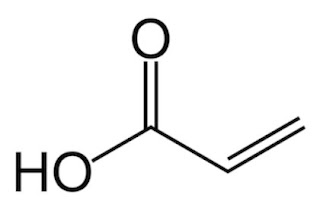Avantium launches DAWN technology
Type of post: NEWS.
Late last month, Avantium announced that it would
officially open the pilot biorefinery for its Zambezi technology in July (see post,
29/6/2018). Yesterday, the Dutch company unveiled the new name of the
technology during the opening event in Amsterdam: DAWN, the future of biorefining. The new facility located in Delfzijl has a maximum capacity of
processing 20 tons of dry wood chips per year.
Figure 1. Logo of DAWN technology
The Zambezi technology has been previously
featured on the Blog but Avantium has just released new information of the process
renamed as DAWN. Some interesting data are summarized in the table below.
Background
|
It is an innovative and
modern development of an industrial process that has been proven at
commercial scale since the 1930s. Avantium has radically improved this process
through proprietary inventions.
Those inventions reduce
water consumption by 70% with significantly reduced energy needs. This not
only manages the environmental footprint of the process but also improves the
cost profile of the resulting products.
|
Feedstocks
|
Forestry residues (wood), corn stover,
bagasse, sugar beet residue and others.
|
Main
product streams
|
1. High purity glucose.
2. Mixed sugars. In addition
to glucose, the stream contains a number of other valuable sugars such as
xylose, mannose and galactose. Mixed sugars are suitable as feedstock for
fermentation processes used to make products such as ethanol, vitamins and
acetic acid.
3. Lignin. Energy generation
is currently the predominant application for lignin but additional higher
value applications are being developed.
|
Process
|
The technology uses acid to
selectively separate the products:
- The feedstock is loaded in a cylindrical
vessel.
- The mixed sugars are separated from the
feedstock through the addition of acid (hemicellulose hydrolysis).
- The high purity glucose is separated from
the feedstock when acid is added in the second pass (cellulose hydrolysis) in
more concentrated form.
- Once the sugars are removed, lignin is the
remaining product in the vessel.
- The vessel is emptied of lignin, fresh
feedstock is loaded and the process is repeated.
- The acid is recycled to the beginning of
the process.
|
Scale-up
|
Assuming successful results
from the pilot biorefinery, Avantium estimates that the design of the
commercial scale flagship biorefinery will commence in 2019 and the start-up
of the plant in 2022 or 2023.
This unique flagship
biorefinery is anticipated to have a capacity of 130 ktons per year of dry
matter wood chips. This can further be scaled up to 350 ktons per year.
|
Figure 2. Simplified schematic overview of the DAWN
process






